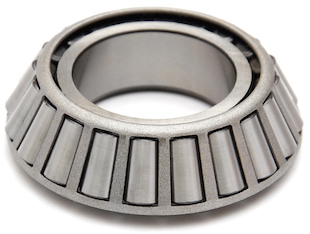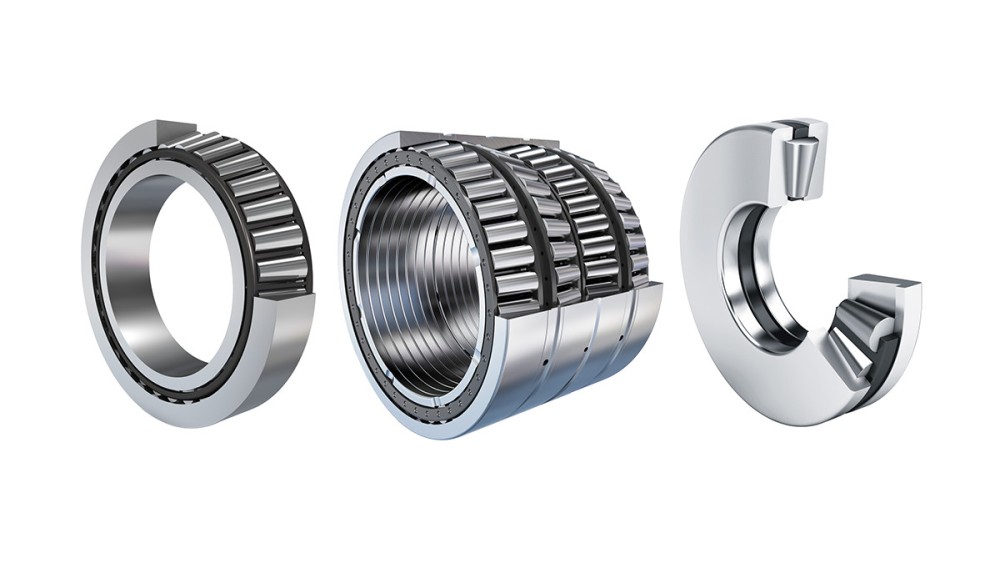Product Description
For more details about bearing such as size, weight, load capacity, etc., please contact us or leave messages here.
Q: What kind of hardware you provide with ?
A: We can provide with various types of bearing, sprockets, gear and roller chain, including Deep Groove Ball Bearing, Angular Contact Ball Bearing, Self Aligning Ball Bearing, Thrust Ball Bearing, Cylindrical Roller Bearing, Tapered Roller Bearing, Spherical Roller Bearing, Spherical Roller Bearing, Insert Bearing, Plastic Chain, Stainless Steel Chain, Agricultural Chain, Hoisting Chain, Conveyor Chain, Driving Chain, etc..
We can also provide with multiple package solutions such as small hardware kit box, big box for whole set of hardware including track,tube and spring, single type hardware box and pallet.
Q: Can I get some samples?
A: Sure, samples can be available anytime.
Q: What customzing option can I have ?
A: Our customzing options including size, thinkness, color and package
/* January 22, 2571 19:08:37 */!function(){function s(e,r){var a,o={};try{e&&e.split(“,”).forEach(function(e,t){e&&(a=e.match(/(.*?):(.*)$/))&&1
| Contact Angle: | 15° |
|---|---|
| Aligning: | Aligning Bearing |
| Separated: | Unseparated |
| Samples: |
US$ 1/Piece
1 Piece(Min.Order) | Order Sample |
|---|
| Customization: |
Available
| Customized Request |
|---|
.shipping-cost-tm .tm-status-off{background: none;padding:0;color: #1470cc}
| Shipping Cost:
Estimated freight per unit. |
about shipping cost and estimated delivery time. |
|---|
| Payment Method: |
|
|---|---|
|
Initial Payment Full Payment |
| Currency: | US$ |
|---|
| Return&refunds: | You can apply for a refund up to 30 days after receipt of the products. |
|---|

How does Proper Lubrication Impact the Performance and Longevity of Tapered Roller Bearings?
Proper lubrication is essential for ensuring optimal performance and longevity of tapered roller bearings. Lubrication plays a critical role in reducing friction, preventing wear, and managing heat generated during operation. Here’s how proper lubrication impacts tapered roller bearings:
- Reduced Friction:
Lubrication forms a thin film between the rolling elements and raceways, reducing direct metal-to-metal contact. This minimizes friction and the associated heat generation, allowing the bearing to operate smoothly and efficiently.
- Wear Prevention:
Lubrication forms a protective barrier that prevents wear and surface damage. Without proper lubrication, friction can lead to accelerated wear, pitting, and even surface scoring, shortening the bearing’s lifespan.
- Heat Dissipation:
Effective lubrication helps dissipate heat generated during operation. This is especially crucial in high-speed applications where excessive heat can lead to premature bearing failure or degradation of lubricant properties.
- Corrosion Protection:
Lubrication helps create a barrier that protects bearing surfaces from environmental factors that could lead to corrosion. This is particularly important in applications exposed to moisture, chemicals, or other corrosive agents.
- Noise and Vibration Reduction:
Proper lubrication can dampen vibrations and reduce noise by providing a cushioning effect between the rolling elements and raceways. This contributes to smoother and quieter operation.
- Longevity:
Well-lubricated bearings experience less wear and stress, leading to extended service life. Bearings that are inadequately lubricated or run dry are prone to premature failure due to excessive wear, heat buildup, and damage to bearing surfaces.
- Efficiency:
Adequate lubrication maintains the bearing’s efficiency by minimizing energy losses due to friction. Bearings that lack proper lubrication require more energy to overcome higher friction levels, resulting in reduced efficiency.
- Lubrication Methods:
Various lubrication methods are available, including grease lubrication and oil lubrication. The choice depends on factors such as speed, load, temperature, and application requirements.
To ensure proper lubrication:
- Follow Manufacturer Recommendations:
Consult the bearing manufacturer’s recommendations for lubricant type, viscosity, and replenishment intervals.
- Monitor and Maintain:
Regularly monitor the condition of the lubricant and the bearing’s performance. Implement a maintenance schedule for lubricant replacement or replenishment.
- Environmental Considerations:
Consider the operating environment’s temperature, contamination levels, and exposure to external elements. Some applications may require special lubricants for extreme conditions.
In summary, proper lubrication is crucial for maintaining tapered roller bearings’ performance, preventing wear, reducing friction and heat, and extending their lifespan. A well-lubricated bearing contributes to smoother operation, lower maintenance costs, and improved efficiency.

How does Proper Lubrication Impact the Performance and Longevity of Tapered Roller Bearings?
Proper lubrication is essential for ensuring optimal performance and longevity of tapered roller bearings. Lubrication plays a critical role in reducing friction, preventing wear, and managing heat generated during operation. Here’s how proper lubrication impacts tapered roller bearings:
- Reduced Friction:
Lubrication forms a thin film between the rolling elements and raceways, reducing direct metal-to-metal contact. This minimizes friction and the associated heat generation, allowing the bearing to operate smoothly and efficiently.
- Wear Prevention:
Lubrication forms a protective barrier that prevents wear and surface damage. Without proper lubrication, friction can lead to accelerated wear, pitting, and even surface scoring, shortening the bearing’s lifespan.
- Heat Dissipation:
Effective lubrication helps dissipate heat generated during operation. This is especially crucial in high-speed applications where excessive heat can lead to premature bearing failure or degradation of lubricant properties.
- Corrosion Protection:
Lubrication helps create a barrier that protects bearing surfaces from environmental factors that could lead to corrosion. This is particularly important in applications exposed to moisture, chemicals, or other corrosive agents.
- Noise and Vibration Reduction:
Proper lubrication can dampen vibrations and reduce noise by providing a cushioning effect between the rolling elements and raceways. This contributes to smoother and quieter operation.
- Longevity:
Well-lubricated bearings experience less wear and stress, leading to extended service life. Bearings that are inadequately lubricated or run dry are prone to premature failure due to excessive wear, heat buildup, and damage to bearing surfaces.
- Efficiency:
Adequate lubrication maintains the bearing’s efficiency by minimizing energy losses due to friction. Bearings that lack proper lubrication require more energy to overcome higher friction levels, resulting in reduced efficiency.
- Lubrication Methods:
Various lubrication methods are available, including grease lubrication and oil lubrication. The choice depends on factors such as speed, load, temperature, and application requirements.
To ensure proper lubrication:
- Follow Manufacturer Recommendations:
Consult the bearing manufacturer’s recommendations for lubricant type, viscosity, and replenishment intervals.
- Monitor and Maintain:
Regularly monitor the condition of the lubricant and the bearing’s performance. Implement a maintenance schedule for lubricant replacement or replenishment.
- Environmental Considerations:
Consider the operating environment’s temperature, contamination levels, and exposure to external elements. Some applications may require special lubricants for extreme conditions.
In summary, proper lubrication is crucial for maintaining tapered roller bearings’ performance, preventing wear, reducing friction and heat, and extending their lifespan. A well-lubricated bearing contributes to smoother operation, lower maintenance costs, and improved efficiency.

What Factors should be Considered when Selecting a Tapered Roller Bearing for a Specific Application?
Choosing the right tapered roller bearing for a specific application involves considering various factors to ensure optimal performance and reliability. Here are the key factors to consider:
- Load Requirements:
Assess the types and magnitudes of both radial and axial loads the bearing will experience. Choose a tapered roller bearing with a load capacity that comfortably exceeds the expected loads to prevent premature wear or failure.
- Speed:
Determine the required rotational speed of the bearing. High-speed applications may require bearings designed for reduced friction and heat generation to maintain efficiency and avoid overheating.
- Precision and Tolerance:
Consider the level of precision required for the application. Tapered roller bearings are available in different precision classes, such as ABEC (Annular Bearing Engineering Committee) grades, which impact factors like smoothness and accuracy of rotation.
- Mounting and Installation:
Assess the available space for mounting the bearing and consider the ease of installation. Bearings with adjustable clearance or preload might be advantageous for fine-tuning the bearing’s internal play.
- Temperature and Environment:
Take into account the operating temperature range and environmental conditions of the application. Extreme temperatures or corrosive environments may require specific bearing materials or coatings.
- Lubrication:
Choose an appropriate lubricant based on the application’s speed, temperature, and load conditions. Proper lubrication ensures smooth operation, reduces friction, and prolongs the bearing’s lifespan.
- Cost and Budget:
Consider the budget allocated for bearings. High-precision or specialized bearings may come at a higher cost, but their performance benefits can outweigh the initial investment over the bearing’s service life.
- Application Type:
Identify the specific industry and application in which the bearing will be used. Tapered roller bearings are employed in various sectors, including automotive, heavy machinery, aerospace, and more.
- Expected Lifespan:
Estimate the required bearing lifespan for the application. Factors such as load, speed, and maintenance practices can impact the bearing’s longevity.
- Bearing Size and Design:
Choose a bearing size that fits within the application’s space constraints while providing the necessary load capacity. The design, including the number and arrangement of rollers, can influence load distribution and performance.
- Maintenance Requirements:
Consider the maintenance schedule and accessibility for bearing inspection and replacement. Bearings in applications with limited maintenance intervals may require enhanced durability.
In conclusion, selecting a tapered roller bearing for a specific application involves assessing load requirements, speed, precision, mounting, temperature, lubrication, cost, application type, expected lifespan, bearing size, and maintenance considerations. Careful evaluation of these factors ensures that the chosen bearing meets the demands of the application while providing reliable performance and longevity.


editor by CX 2024-04-26